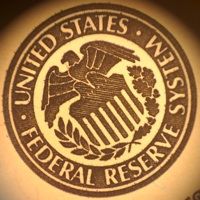JP Morgan fiasco means higher interest rates ahead
By Chriss Street
If there was an Academy of Motion Picture Arts and Sciences award for the best acting performance by a CEO, Jamie Dimon of J.P. Morgan Bank would surely win the Oscar for his dismissal of a $2 billion off-shore derivative loss as “a complete tempest in a teapot.” Dimon tried to use all his theatrical skills to distract the American public from discovering that the U.S. Federal Reserve’s policy of loaning money to banks at zero-interest-rates has made derivative trading wildly profitable, but made lending to American businesses less profitable.
As fallout from the J.P. Morgan fiasco exposes the bloated derivative activities of major banks, the Federal Reserve will be forced to terminate the zero interest rate policy and let rates rise to retard bank speculative actions. Higher interest rates will stimulate banks to make more commercial and industrial loans, resulting in higher U.S. economic growth.
Achilles Macris, J.P. Morgan’s CIO in their London office, began using the bank’s access to cheap capital from the Fed to amass a huge over-the-counter derivative gamble that high yield and sovereign debt interest rates would fall, after MF Global suffered a $1.2 billion loss on similar bets and was forced to file for bankruptcy last October 30.
Morgan’s gamble became very profitable after December 21 when the European Central Bank began making $640 billion off three year loans at 1 percent interest, referred to as “Long Term Refinancing Operations” — LTROs — available to the banks of Portugal, Ireland, Italy Greece and Spain — the PIIG countries. By the end of December, J.P. Morgan’s total derivative exposure was $70.2 trillion on just $1.8 trillion of bank assets, according to the U. S. Controller of the Currency. Morgan is reported to have continued heavy derivative buying in January and February. Its profits soared again when the ECB announced LTRO2 as another $714 billion in three year low-interest loans to PIIGS banks.
The stock of J.P. Morgan vaulted from $29 per share in December to $45 a share in March as rumors swirled that Achilles Macris and his London team of six had already made $2-3 billion as high yield and sovereign debt interest rates continued to fall. A jubilant Jamie Dimon announced that J.P. Morgan would increase its dividend and buy back $15 billion of its stock.
France and Greece
Everything seemed rainbows and unicorns for J.P. Morgan until two weeks ago, when France and Greece elected hardcore leftist candidates who want to abandon austerity spending cuts and increase social welfare spending. Interest rates on the PIIGS sovereign debt shot back up and J.P. Morgan appears to have suffered a $4-5 billion loss. It also appears the bank has been unable to limit its losses to $2 billion by selling out of their enormous derivative positions.
Jamie Dimon tried to dismiss the losses by promising heads will roll. But congressional hearings will soon illuminate to American taxpayers that the Fed has provided the capital that has allowed America’s three largest banks to engage in $173 trillion in leveraged derivative speculation:
| Bank | JP Morgan Chase Bank | Citibank National Bank | Bank of America |
| Derivative Position |
$70,1517,56,000,000 |
$52,102,260,000,000 |
$50,102,260,000,000 |
| Total Assets |
$1,811,678,000,000 |
$1,288,658,000,000 |
$1,451,890,000,000 |
| Leverage Ratio |
38.5 |
40.3 |
33.4 |
The derivative exposure of these three banks alone exceeds 11 times the American economy and 2.7 times the economies of all the nations on earth. On December 30, the derivatives leverage ratio of these three banks stood at 37 times. Menacingly, this leverage ratio exceeds the average leverage ratio of 32 times assets for Lehman Brothers, Bear Stearns and Merrill Lynch, shortly before the shock of their collapse instigated the start of the Great Recession in 2008.
Federal Reserve Policy
After five years of miserable unemployment numbers and virtually no growth, it seems clear the Federal Reserve’s $2 trillion increase in bank lending at zero interest rates has been better at expanding the international derivatives markets than expanding the American economy. The Federal Reserve owns much of the blame for this phenomenon. By keeping interest rates so low, banks were unable to make a rate of return above their cost of capital on traditional lending.
Kansas City Federal Reserve Bank President Thomas Hoenig in a recent interview warned that an extended period of ultra-low interest rates invites speculative behavior:
“When you have zero rates that go on indefinitely, you are inviting future problems.”
The recent J.P. Morgan derivatives fiasco has demonstrated that the Fed’s zero interest rate policy has encouraged risky financial speculation that is highly dangerous and potentially destructive. It’s time for the Fed to let interest rates rise, so banks can get back to the business of financing America’s real-economy.
———————————
Feel free to forward this Op Ed and follow our Blog at www.chrissstreetandcompany.com.
If you Chriss Street to speak to your organization, contact [email protected].
Chriss Street’s latest book: “The Third Way,” now available on www.amazon.com
Related Articles
Workers' Comp officials reprimanded
MAY 13, 2010 By KATY GRIMES Mention workers’ compensation reform in a crowd, and eyes immediately glaze over. It can
Big Brother in your car?
APRIL 8, 2010 By KATY GRIMES Sen. Alan Lowenthal, D-Long Beach, has introduced a bill that would require the Department of
Are Split Rolls Coming Soon?
NOV. 16, 2010 By KATY GRIMES The recent passage of Proposition 25, which allows legislators to pass a budget with



